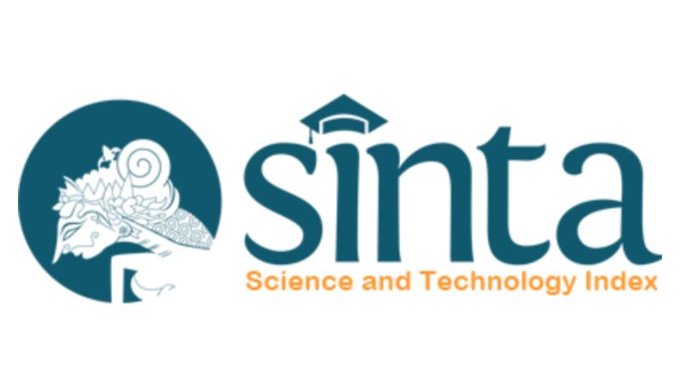Terapi Stem Cell untuk Penyakit Parkinson
DOI:
https://doi.org/10.55175/cdk.v47i3.356Kata Kunci:
Neurodegeneratif, Parkinson, stem cellAbstrak
Penyakit Parkinson adalah salah satu gangguan neurodegeneratif terbanyak di dunia yang ditandai dengan gangguan motorik ataupun nonmotorik kronik progresif akibat degenerasi neuron dopaminergik pada substansia nigra. Prevalensi penyakit ini meningkat seiring pertambahan usia dan paling banyak pada individu berusia di atas 60 tahun. Terapi farmakologi saat ini efektif memperbaiki gejala dan meningkatkan kualitas hidup dengan cara memodulasi sistem dopamin, akan tetapi belum ada yang dapat menghentikan progresivitas penyakit. Terapi stem cell mulai diteliti karena kemampuan berdiferensiasi menjadi sel saraf dan dapat diinduksi menjadi sel dengan fungsi spesifik. Tujuan review ini adalah mendeskripsikan beberapa jenis stem cell sebagai terapi potensial penyakit Parkinson.
Parkinson’s disease is one of the most frequent neurodegenerative disorders in the world, characterized by chronic progressive motor and nonmotor disorders due to degeneration of dopaminergic neurons in the substantia nigra. The prevalence increases with age and mostly occurs in individuals over 60 years old. Pharmacological treatment of Parkinson’s disease is currently effective in improving patient’s symptoms and quality of life by modulating the dopamine system, but can not prevent the progression of this disease. Stem cell therapy has been studied as the potential therapy because of its ability to differentiate into nerve cells and induced into cells with specific functions. This review describe several types of stem cells as a potential therapy for Parkinson’s disease.
Unduhan
Referensi
Goodarzi P, Aghayan HR, Larijani B, Soleiman M, Dehpour AR, Sahebjam M, et al. Stem cell-based approach for the treatment of Parkinson's disease. Med J Islamic Republic of Iran. 2015;29:168.
Samalia A, Hayatudeen. Pathophysiology and management of Parkinson disease. Bayero J Pure Applied Sci. 2018;11(1):238-43.
Ahmed HH, Salem AM, Atta HM, Eskandar EF, Farrag AR, Ghazy MA, et al. Updates in the pathophysiological mechanisms of Parkinson’s disease: Emerging role of bone marrow mesenchymal stem cells. World J Stem Cells. 2016;8(3):106–17
Demaagd G, Philip A. Parkinson’s disease and its management. PT. 2015;40(8):504-10, 532.
Han F, Baremberg D, Gao J, Duan J, Lu X, Zhang N, et al. Development of stem cell-based therapy for Parkinson’s disease. E-jnl NCBI [Internet]. 2015. Available from https://www.ncbi.nlm.nih.gov/pmc/articles/PMC4559356/ [cited 2019 June 25]
Daubner SC, Le T, Wang S. Tyrosine hydroxylase and regulation of dopamine synthesis. E-jnl Arch Biochem Biophys [Internet]. 2010. Available from: https://www.ncbi.nlm.nih.gov/pmc/ articles/PMC3065393 [cited 2019 June 25]
Fu MH, Li CL, Lin HL, Chen PC, Calkins MJ, Chang YF, et al. Stem cell transplantation therapy in Parkinson’s disease. E-jnl Spingerplus [Internet]. 2015;4:597. Available from: https://www.ncbi.nlm.nih.gov/pmc/articles/PMC4628010/[cited 2019 June 25]
Magrinelli F, Picelli A, Tocco P, Federico A, Roncari L, Smania N, et al. Pathophysiology of motor dysfunction in Parkinson's disease as the rationale for drug treatment and rehabilitation. Parkinsons Dis [Internet]. 2016 [cited 2019 June 25]. Available from: https://www.ncbi.nlm.nih.gov/ pmc/articles/PMC4913065/
Galvan A, Wichmann T. Patohysiology of Parkinsonism. Clin Neurophysiol [Internet]. 2008 [cited 2019 June 25];119(7):1459-74. Available from: https://www.ncbi.nlm.nih.gov/pmc/article/PMC2467461/
Avasti S, Srivastava RN, Singh A, Srivastava M. Stem cell: Past, present and future- A review article. Internet J Medical Update [Internet]. 2008 [cited 2019 June 25];3(1). Available from: http://citeseerx.ist.psu.edu/ viewdoc/download;jsessionid=6E02FEE5C20C70AEA4168413633A9DA7
The National Academies. Understanding Stem cells [Internet]. 2002 [cited 2019 June 25]. Available from: https://nas-sites.org/stemcells
Kalra K, Thomar PC. Stem cell: Basics, classification and applications. Am J Phytomedicine and Clinical Therapeutics [Internet]. 2014 [cited 2019 June 25]. Available from http://www.imedpub.com/articles/stem-cell-basics-classification- andapplications.pdf
Stoker TB, Greenland JC. Stem cell treatments for Parkinson’s disease. E-jnl NCBI [Internet]. 2018 [cited 2018 June 25]. Available from: https://www.ncbi.nlm.nih.gov/books/NBK536728
Kikerby A, Nolbrant S, Tiklova K, Heuer A, Kee N, Cardoso T, et al, Predictive markers guide differentiation to improve graft outcome in clinical translation of hESCbased therapy for Parkinson’s disease. Cell stem cell. 2017;20(1):135–48.
Volarevic V, Markovik BS, Gazdic M, Volaveric A, Jovicic N, Arsenijevic N, et al. Ethical and safety issues of stem cell-based therapy. Int J Med Sci. 2018;15(1):36–45.
Hwang S, Gill S, Pathak S, Subramanian S. A comparison of stem cell therapies for Parkinson disease. Georgetown Medical Review [Internet]. 2018 [cited 2018 June 25]. Available from https://gmr.scholasticahq.com/article/3420-a-comparison-of-stem-cell-therapies-for-Parkinson-disease
Chi K, Huei R, Huang YC, Chen SY, Hsu CJ, Kin SZ, et al. Adipose-derived stem cells stimulated with n-butylidenephthalide exhibit therapeutic effects in a mouse model of Parkinson’s disease. E-jnl Sage Journals [Internet]. 2018 [cited 2019 June 25]. Available from: https://journals.sagepub.com/doi/full/10.1177/0963689718757408
Kitada M, Dezawa M. Parkinson’s disease and mesenchymal stem cells: Potential for cell-based therapy. Parkinson’s disease [Internet]. 2012 [cited 2019 June 25]:873706. Available from: https://www.ncbi.nlm.nih.gov/pubmed/22530164
Shetty P, Ravindran G, Sarang S, Thakur AM, Rao HS, Viswanathan C. Clinical grade mesenchymal stem cells transdifferentiated under xenofree conditions alleviates motor deficiencies in a rat model of Parkinson’s disease. Cell Biol Int. 2009;33:830–8.
Bouchez G, Sensebé L, Vourc’h P, Garreau L, Bodard S, Rico A, et al. Partial recovery of dopaminergic pathway after graft of adult mesenchymal stem cells in a rat model of Parkinson’s disease. Neurochem Int. 2008;52:1332–42.
Frese L, Dijkman P, Hoerstrupa S. Adipose tissue-derived stem cells in regenerative medicine. Transfus Med Hemother. 2016;43(4):268–74.
Zuk PA, Zhu M, Ashjian P, Ugarte DA, Huang J, Mizuno H, et al. Human adipose tissue is a source of multipotent stem cells. Mol Biol Cell. 2002;13(12):4279–95.
Miana VV, Gonzalez EA. Adipose tissue stem cells in regenerative medicine. E-jnl Ecancermedicalscience [Internet]. 2018. Available from https://www.ncbi.nlm.nih.gov/pmc/articles/ PMC5880231/
Baltazar DH, Nadella R, Llanderal TC, Olguín AP, Bonilla AA, Flores LM, et al. The causative and curative roles of brain-derived neurotrophic factor in Parkinson’s disease, Parkinson's disease and beyond - A neurocognitive approach. IntechOpen [Internet]. 2018 [cited 2019 June 25]. Available from: https://www.intechopen.com/books/Parkinson-s-disease-and-beyond-a-neurocognitive-approach/the causative-and-curative-roles-of-brain-derived-neurotrophic-factor-in-Parkinson-sdisease.
Purwati S, Fauzi AA, Gunawan PI. Clinical outcome of intraventricular implantation autologous adipose derived neural progenitor cells in Parkinson. Asian J Microbiol, Biotechnol Environmental Sci Paper. 2018;20:48-54.
Takahashi K, Yamanaka S. Induction of pluripotent stem cells from mouse embryonic and adult fibroblast cultures by defined factors. Cell. 2006;25;126(4):663-76.
Unduhan
Diterbitkan
Cara Mengutip
Terbitan
Bagian
Lisensi
Hak Cipta (c) 2020 Cermin Dunia Kedokteran

Artikel ini berlisensi Creative Commons Attribution-NonCommercial 4.0 International License.





















